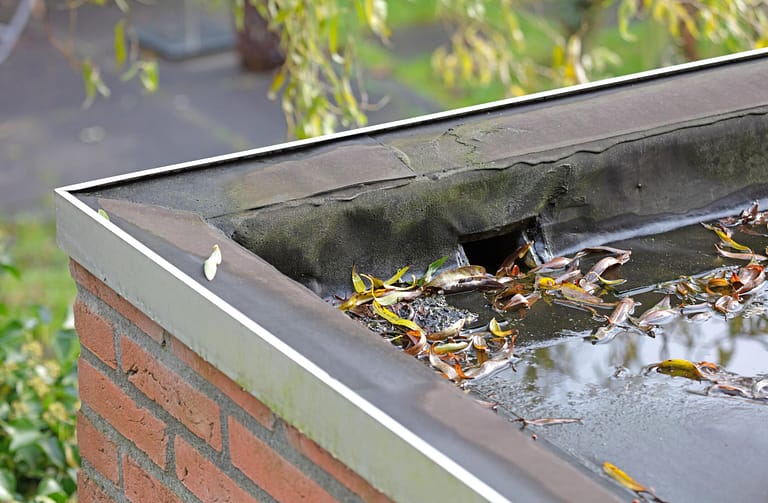
Have you been considering a roof overlay but aren’t quite sure what it entails? Well, you’re in luck! In this comprehensive guide, we’ll dive into everything you need to know about roof overlays, including their average cost, purpose, and benefits. Whether you’re looking to extend the life of your existing roof or give your home a fresh new look, a roof overlay could be just what you need. So, let’s jump right in and explore the world of roof overlays together!
Inside this blog:
- A basic rundown of a roof overlay
- Average costs of roof overlays
- The main purpose and advantages of roof overlays to consider
Keep reading to learn everything you need to know about roof overlays!
Understanding Roof Overlays: What Are They?

So, what exactly is a roof overlay? In simple terms, a roof overlay involves installing a new layer of roofing material directly over the existing roof. This means that instead of tearing off the old roof and starting from scratch, a new layer of shingles or other roofing material is added on top of the existing one. Roof overlays are a popular choice for homeowners looking to save time and money on roof replacement projects while still achieving a durable and attractive result.
- Cost-Effective Option: Roof overlays are typically more cost-effective than full roof replacements since they require less labor and materials.
- Less Disruption: Unlike tear-off projects, roof overlays involve minimal disruption to your daily routine since there’s no need to remove and dispose of the old roofing materials.
- Environmentally Friendly: By avoiding the need to tear off and dispose of the old roof, roof overlays can be a more environmentally friendly option since they generate less waste.
Average Cost of a Roof Overlay: What to Expect
Now that you have a basic understanding of what a roof overlay entails, let’s talk about the average cost. The cost of a roof overlay can vary depending on several factors, including the size and complexity of your roof, the type of roofing material you choose, and the labor costs in your area. On average, you can expect to pay anywhere from $3,000 to $8,000 for a roof overlay, with costs potentially higher for larger or more complex projects.
- Roof Size: The larger your roof, the more materials and labor will be required, which can increase the overall cost of the project.
- Roofing Material: The type of roofing material you choose will also impact the cost of the overlay. While asphalt shingles are the most common and affordable option, premium materials like metal or slate will come with a higher price tag.
- Labor Costs: Labor costs can vary depending on your location and the expertise of the roofing contractor you hire. Be sure to get multiple quotes from reputable contractors to ensure you’re getting a fair price.
Purpose and Benefits of a Roof Overlay: Why Consider It?

Now that you know what a roof overlay is and how much it might cost, let’s discuss the purpose and benefits of this popular roofing option. Roof overlays offer several advantages over full roof replacements, making them a compelling choice for many homeowners.
Extend Roof Lifespan
One of the primary purposes of a roof overlay is to extend the lifespan of your existing roof. By adding a new layer of roofing material, you can reinforce the existing roof and protect it from the elements, potentially adding years to its lifespan.
Enhance Aesthetic Appeal
In addition to improving the functionality of your roof, a roof overlay can also enhance the aesthetic appeal of your home. With a fresh layer of shingles or other roofing material, your home will look like new again, boosting its curb appeal and resale value.
Save Time and Money
Perhaps the most significant benefit of a roof overlay is the time and money it can save you compared to a full roof replacement. Since there’s no need to tear off the old roof, a roof overlay can be completed more quickly and with less labor and materials, resulting in significant cost savings.
Is a Roof Overlay Right for You? Considerations to Keep in Mind
While roof overlays offer many benefits, they may not be the best option for every homeowner or every situation. Before deciding whether a roof overlay is right for you, it’s essential to consider a few key factors.
Condition of Existing Roof
A roof overlay is only suitable if your existing roof is in relatively good condition. If your roof has extensive damage or structural issues, a full roof replacement may be necessary.
Building Codes and Regulations
Before proceeding with a roof overlay, be sure to check local building codes and regulations. Some areas may have restrictions or requirements regarding the number of roofing layers allowed, which could impact your decision.
Consult with a Professional
Finally, it’s always a good idea to consult with a professional roofing contractor to assess your roof’s condition and discuss your options. A qualified contractor can help you determine whether a roof overlay is the best choice for your home and provide you with an accurate cost estimate.
Boost Your Home’s Curb Appeal With a Roof Overlay
In summary, a roof overlay can be a cost-effective and efficient way to extend the life of your existing roof while enhancing your home’s curb appeal. With average costs ranging from $3,000 to $8,000, a roof overlay offers a budget-friendly alternative to full roof replacements, making it an attractive option for many homeowners.
However, it’s essential to consider factors such as the condition of your existing roof, local building codes, and professional advice before making a decision. By exploring your roofing options and weighing the pros and cons of a roof overlay, you can make an informed choice that meets your needs and budget.
Contact our expert team of roofing contractors for any questions or concerns about the roof that protects your home. We want to ensure that your home stays safe with a durable and beautiful roof for years to come!






